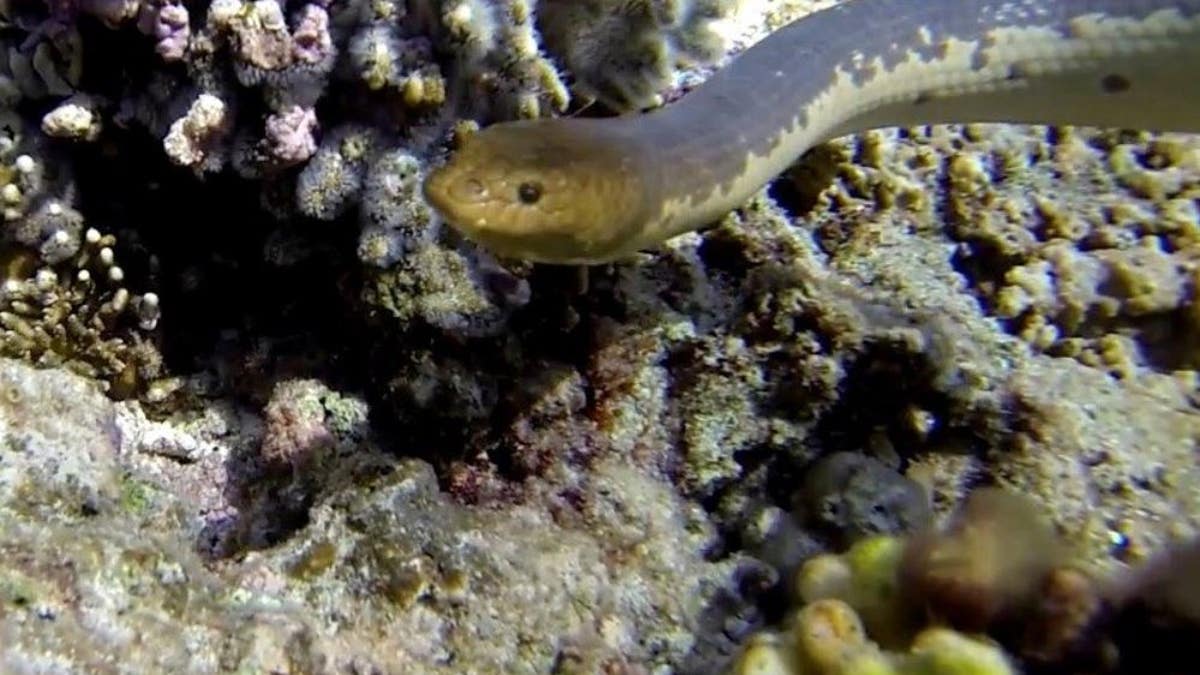Fox News Flash top headlines for May 28
Fox News Flash top headlines are here. Check out what's clicking on Foxnews.com.
Sea snakes have been evolving for 15 million years to adapt to changing conditions in the marine environment, including their vision underwater, a new study showed.
Research led by the University of Plymouth in the U.K. and published in Current Biology has provided evidence of where, when and how often species adapted their ability to see in color.
The findings suggested that sea snakes' vision has been morphing genetically over millions of generations, giving them the abilty to adapt to diverse environments and still see their prey deep underwater.
"In the natural world, species obviously have to adapt as the environment around them changes. But to see such a rapid change in the sea snakes' vision over less than 15 million years is truly astonishing," Bruno Simões, a lecturer in animal bology at the University of Plymouth, said in a statement.
CAT IN FRANCE THAT CONTRACTED COVID-19 SURVIVES INFECTION

An olive sea snake (Aipysurus laevis) foraging in Western Australia. (Bruno Simoes, University of Plymouth)
DINOSAURS MAY HAVE TURNED TO CANNIBALISM IN HARD TIMES, STUDY SHOWS
Simões said that the pace of diversification among sea snakes, compared to their relatives on land and in the sea, highlights the extreme challenges of their environment.
"Our study also shows that snake and mammal vision has evolved very differently in the transition from land to sea. Sea snakes have retained or expanded their color vision compared to their terrestrial relatives, whereas pinnipeds and cetaceans underwent a further reduction in the dimensions of their color vision," Simões explained. "This contrast is further evidence of the remarkable evolutionary diversity of snake eyesight."
In the study, scientists also write that despite being descended from highly visual lizards, snakes have limited (typically two-tone) color vision, attributed to the dim-light lifestyle of their early snake ancestors.
